A warm and beautiful country with a stunning diversity of cultures, cuisines, and experiences, Mexico is a place to visit over and over again. I’ve traveled the country from north to south, east to west, and there are still places I long to go or dream of seeing again.
From beachfront yoga retreats to avant-garde photography exhibitions, international performing-arts festivals to breathtaking wilderness, Mexico is a fascinating place with a seemingly endless variety of experiences to offer. The constant is the warmth of its people and culture—and, of course, its enviable weather—near-perfect year round.
If you’re considering a trip to Mexico in 2016, here are primers the country’s most popular destinations right now:
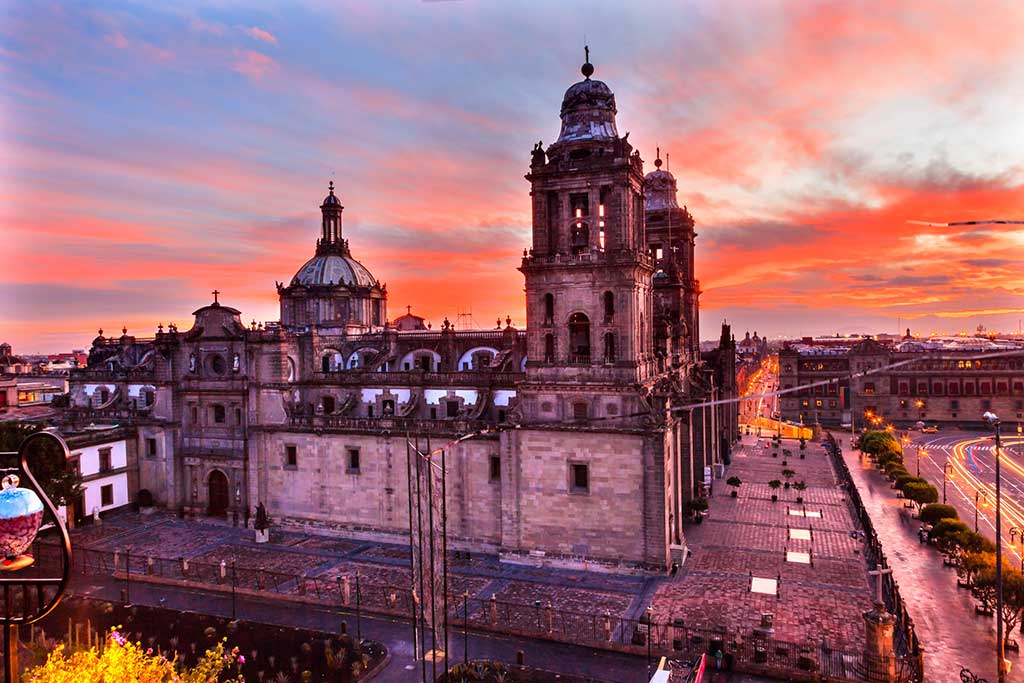
Mexico City at sunset. Photo © William Perry/123rf.
Mexico’s capital is a city like no other—a sprawling metropolis of 20-plus-million people that embodies the splendor and chaos of modern life, as well as the richness of Mexico’s culture and history. With a multitude of new museums, contemporary galleries, and critically beloved restaurants opening throughout the city, Mexico City’s star is rising quickly. In January, Mexico City was named the top place to visit in 2016 by the New York Times.
Best for: Adventurers, city types, artists, writers, couples, and food lovers.
Belly button of the world: Mexico City’s central square, the Zócalo, has been the heart of the metropolis since the founding of the Mexica city of Tenochtitlan in 1325.
The jewel of the city: The National Anthropology Museum holds a breathtaking collection of pre-Columbian artifacts and art from cultures across Mexico. The rooms dedicated to the city of Tenochtitlan and the Valle of Mexico (where modern-day Mexico City was founded) are particularly impressive.
New old spot: The Centro de la Imagen, near the Plaza de la Ciudadela, recently reopened after a breathtaking three-year-long renovation, which included the construction of dramatic exhibition spaces, projection rooms, and an outdoor “photo mural.” Even more expanded galleries are set to open at the Centro in the second half of February.
Fast bite: Tacos are king in the capital. Try El Califa in the Colonia Condesa or El Huequito in the centro histórico for tacos al pastor, or Los Tacos del Guero (officially known as Taqueria Hola) in the Condesa for tacos de guisado.
Splurge on: A lunch at neighborhood restaurant turned international hot spot Maximo Bistrot Local, in the Roma, or dinner at modernist Mexican restaurant Pujol, ranked among the world’s best restaurants.
Today’s Talking Point: The capital of Mexico, Mexico City was long known as the “distrito federal,” or federal district, a distinct political region similar to D.C. in the United States. In 2016, the government officially changed the name of the city to Ciudad de México.
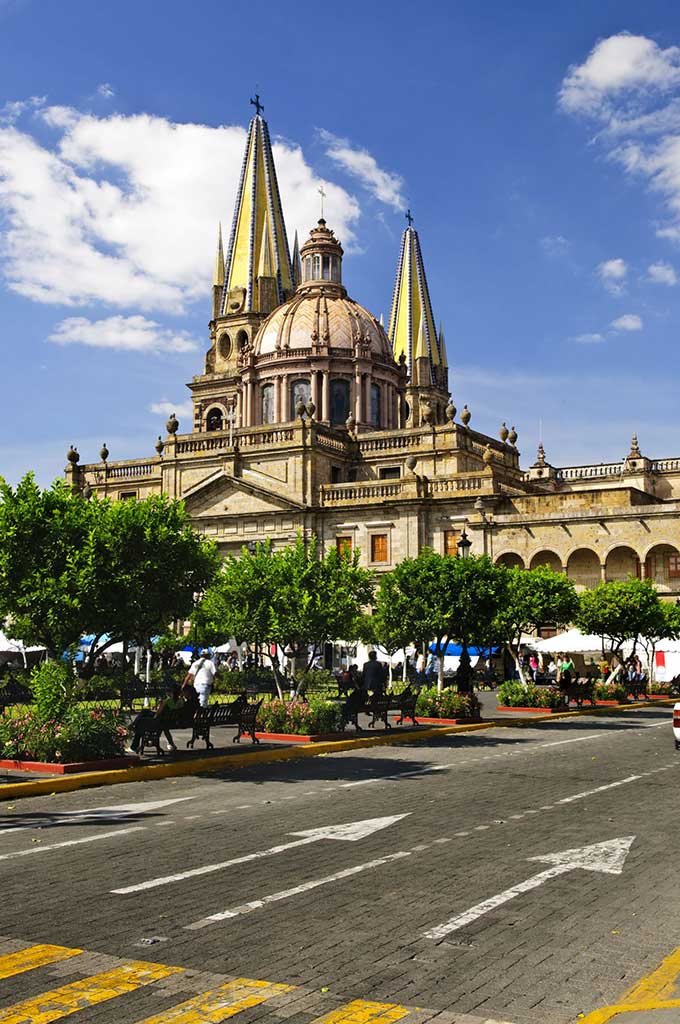
View of the Cathedral from Zocalo in historic center in Guadalajara. Photo © Elena Elisseeva/123rf.
Compared to the capital’s frenetic pace, Guadalajara feels easygoing and folkloric, yet entirely urban, too. It’s a great place to learn about Mexico’s history and culture, enjoy traditional Mexican food, and sample a range of tequilas produced in the nearby pueblo of Tequila.
Best for: Families, cultural travelers, students, and first-time visitors to Mexico.
Claim to fame: The home of mariachi and tequila, Guadalajara claims to be the most Mexican of Mexican cities.
Bargain-hunter’s paradise: You’ll find dozens of traditional craft shops and galleries in the charming neighborhood of Tlaquepaque, but visit the community of Tonalá for an array of handmade ceramics at rock-bottom prices.
Memorable lunch: The charming Birrieria Las 9 Esquinas is known for its savory goat-meat stew, called birria, served in a big ceramic bowl and accompanied with fresh tortillas, made in-house.
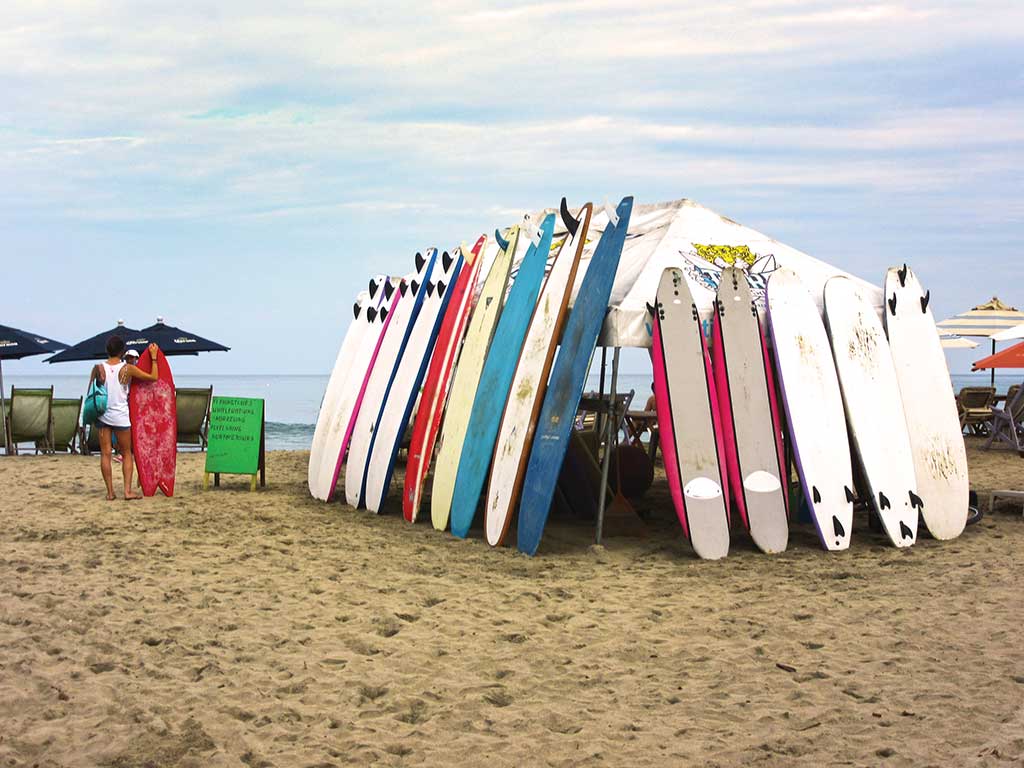
Surf boards on the beach in Puerto Vallarta. Photo © Julie Meade.
The Pacific Coast’s most romantic resort town isn’t only high-rise hotels and all-inclusive getaways. For thoroughly Mexican charm, head to Old Vallarta, where cobbled streets are flanked by Mexican restaurants, and family-style hotels line the beach.
Best for: Families, art lovers, spring breakers, and honeymooners.
Whale of a time: Marine mammals love the tranquil waters of the Bay of Banderas, and dolphins visit Puerto Vallarta throughout the year. From November to April, numerous companies offer whale-watching tours during the humpback migration off the coast.
Beat the crowds: Water taxis shuttle beachgoers to quieter coves and bays near Vallarta, like Yelapa and Las Ánimas.
Or join ’em: The multistory nightclubs along the Malecon are chapels to tequila shots and thumping dance music, where you can bump with the crowds till dawn, or simply enjoy a beer and the breeze with a view of the sea.
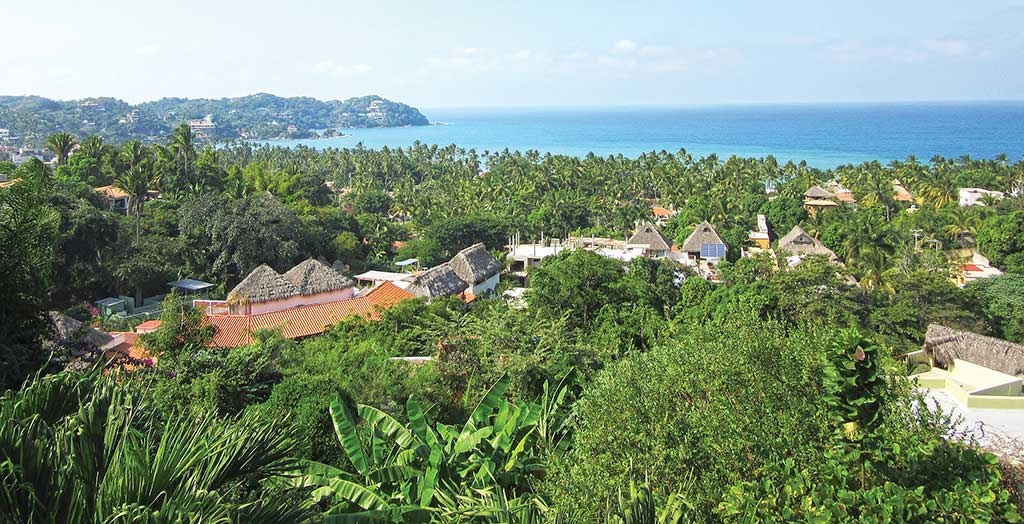
View of Sayulita and the bay from a house on Nanzal Hill. Photo © Justin Henderson.
The Pacific beaches north of Puerto Vallarta, located along the Pacific Coast of Nayarit state, are quieter, more laid-back, and, in most cases, far cheaper than their famous neighbor to the south. Come here to surf, take yoga classes, and mingle with other vacationers in the low-key bars and cafes along the shore.
Best for: Surfers, yogis, beach bums, and families.
Best break: Sayulita is a popular destination for surfers, with its gently crashing waves suitable for beginners as well as more advanced surfers.
Upscale spot: The ultra-luxe St. Regis and Four Seasons hotels are located in Punta de Mita, the rugged point on the northern end of the Bahia de Banderas, but you can also find vacation rentals and smaller hotels on this beautiful point.
Low-key spot: North of Sayulita is San Francisco, unofficially known as San Pancho, a quiet little beach town with plenty of budget accommodations, a surf break, and a friendly community.
Fun Fact: The state line between Jalisco (where Puerto Vallarta is located) and Nayarit also delineates the time zone; even though it’s just a short drive north up the coast, it’s is one hour earlier in Nayarit (Mountain Time) than in Puerto Vallarta (Central Time).
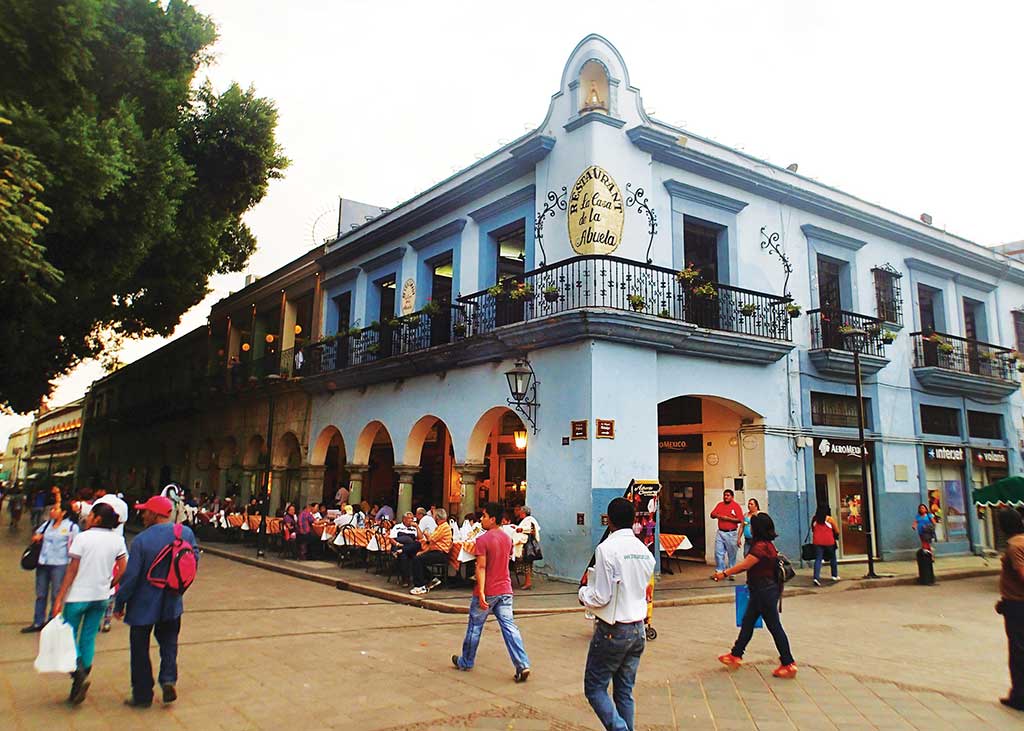
Sidewalk cafés around the zócalo in Oaxaca City. Photo © Justin Henderson.
With its rich cultural traditions, mystical Zapotec ruins, and majestic colonial-era centro histórico, the city of Oaxaca is one of the most magical places in Mexico. It is also a top stop for food lovers: Oaxaca’s famous cuisine is among the most distinctive and delicious in Mexico.
Best for: Culture lovers, foodies, students, artists, activists, and families.
The spirit of the place: Fiery, smoky, and potent, Oaxacan mezcal is generally considered the best in Mexico.
Best bar snack: Fried grasshoppers are a salty compliment to a shot of mezcal or a cerveza.
Best late-night nosh: You can stop in till four o’clock in the morning at Tlayudas Los Libres, a famous little eatery on a street of the same name, which specializes in crunchy tlayudas (giant corn tortillas filled with beans and cheese) prepared on an open fire.
Market finds: The traditional markets in Oaxaca are a great place to eat and shop. Pick up tamales wrapped in banana leaf, fresh cheese, or a mug of chocolate caliente (made with water rather than milk, as is traditional in Oaxaca). Or try tejate, an unusual cold beverage made from chocolate, maize, the seed of the mamey, and sugar. In the market, it’s typically served in a hollowed-out gourd.
Off-the-beaten-path day trip: Visit the lovely Centro de las Artes de San Agustín, a contemporary art center located in a turn-of-the-20th-century textile factory, in the small town of San Agustín Etla.
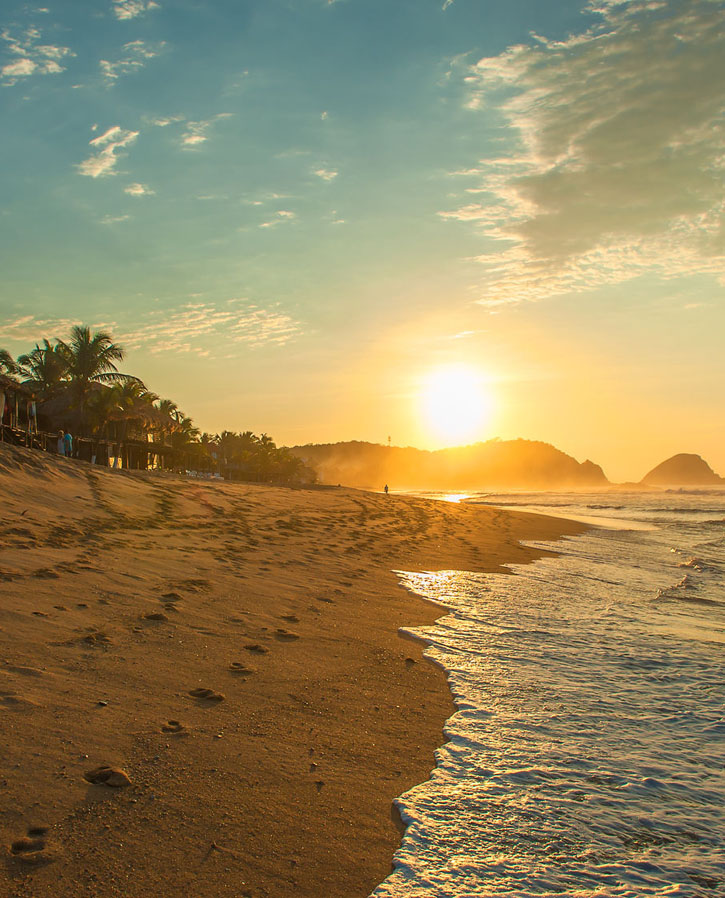
Playa Zipolite at sunrise. Photo © Konstantin Kalishko/123rf.
Take a rattletrap bus (or a quick flight) over the Sierra Madre to find cheap, tucked-away beach towns along the Pacific coast in Oaxaca state, including the hippie haven of Zipolite, the surfer paradise of Puerto Escondido, and quiet fishing village of Puerto Ángel.
Best for: Hippies, beach bums, and backpackers.
Sweet under-the-radar beach: San Agustinillo, between Zipolite and Mazunte, is a gorgeous little bay surrounded by small lodgings and cafes.
Turtle love: Many sea turtles come to nest on the beach at Mazunte, where the local Centro Mexicano de la Tortuga works to promote the turtles’ well-being and safety.
A touch of chic: Stylish Hotel Escondido, a design-centric beach hotel, run by chic Grupo Habita, opened in Puerto Escondido in late 2013.
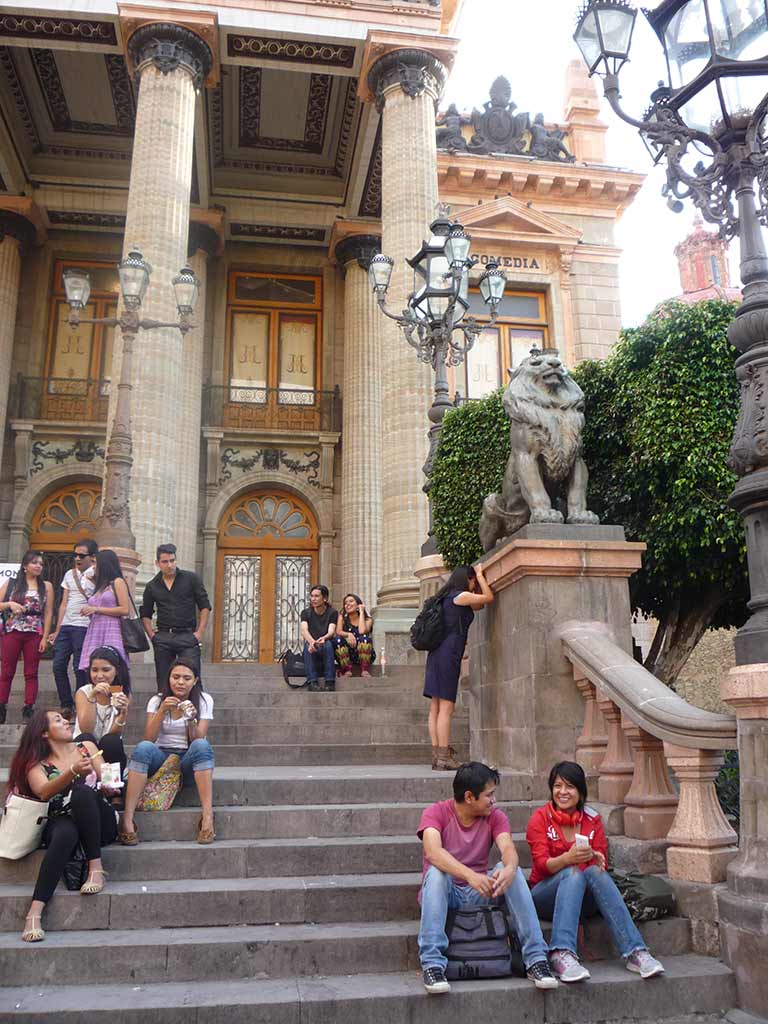
Teatro Juárez in Guanajuato. Photo © Julie Meade.
Guanajuato is one of Mexico’s most spectacular cities. In the unique centro histórico, crumbling 17th-century churches and pastel-hued houses climb the walls of a steep ravine, and twisting roads lead to shady open plazas. It’s a place to stroll, to sip coffee, to get lost. Originally founded in the 16th century, the city grew wealthy and opulent after silver was discovered in the craggy peaks near the city center.
Best for: Students, backpackers, families, and culture lovers.
UNESCO World Heritage Site: Since 1988.
Precious urban quirk: In the centro histórico, all automobile traffic runs through underground tunnels, making the city particularly pedestrian-friendly.
Study bug: Home to the prestigious Universidad de Guaunajuato, this little town also has numerous Spanish-language schools for foreigners—and plenty of adorable coffee shops to study in.
Quixotic attraction: The two-week-long Festival Internacional Cervantino in October is Mexico’s largest and most prestigious arts festival, with performers from across the globe coming to the city’s many historic theaters and outdoor plazas.
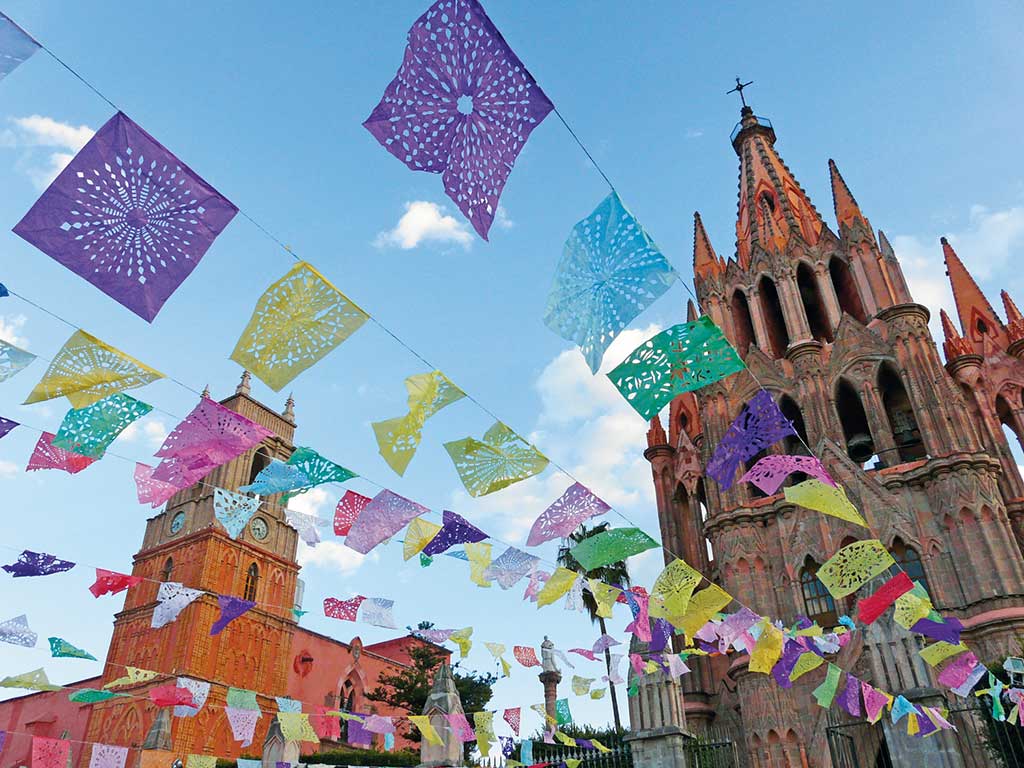
Parroquia de San Migel Arcángel in San Miguel de Allende. Photo © Julie Meade.
A romantic colonial-era pueblo in the Mexican high desert, San Miguel de Allende has grown more sophisticated in the past decade, with stylish small hotels, creative fine-dining restaurants, and Instagram-worthy shops cropping up across town. Even so, this little town retains its romance, quirky charm, and signature warmth and friendliness, as well as its unique beauty—San Miguel’s blend of earthy ochre- and rust-colored buildings, sandstone chapels, weathered fountains, flowering trees, and soft pink sunlight is a feast for the eyes.
Best for: Artists, art students, cultural travelers, first-time visitors to Mexico, couples, solo travelers, and retirees.
Iconic sight: The Parroquía de San Miguel Arcángel—a neo-gothic, pink-sandstone church, right in the center of town—is one of the most unusual landmarks in Mexico, and a symbol of San Miguel de Allende.
San Mike: Since the 1940s, San Miguel de Allende has been home to a sizable American and Canadian expatriate community, attracting writers, artists, and bohemian types with its beautiful light and easygoing atmosphere. It’s also a popular place to retire.
¿Que Pasa?: San Miguel’s weekly bilingual newspaper Atención San Miguel has a weekly insert called “¿Que Pasa?” that lists all the gallery openings, concerts, poetry readings, and other special events taking place around town. Don’t be shy: pick something that interests you, and drop by. San Miguel’s community is close-knit and welcoming.
Dive bar, bar none: With cheap beer and occasional art exhibitions, La Cucaracha is a San Miguel institution and one of the coolest low-key cantinas in Mexico.
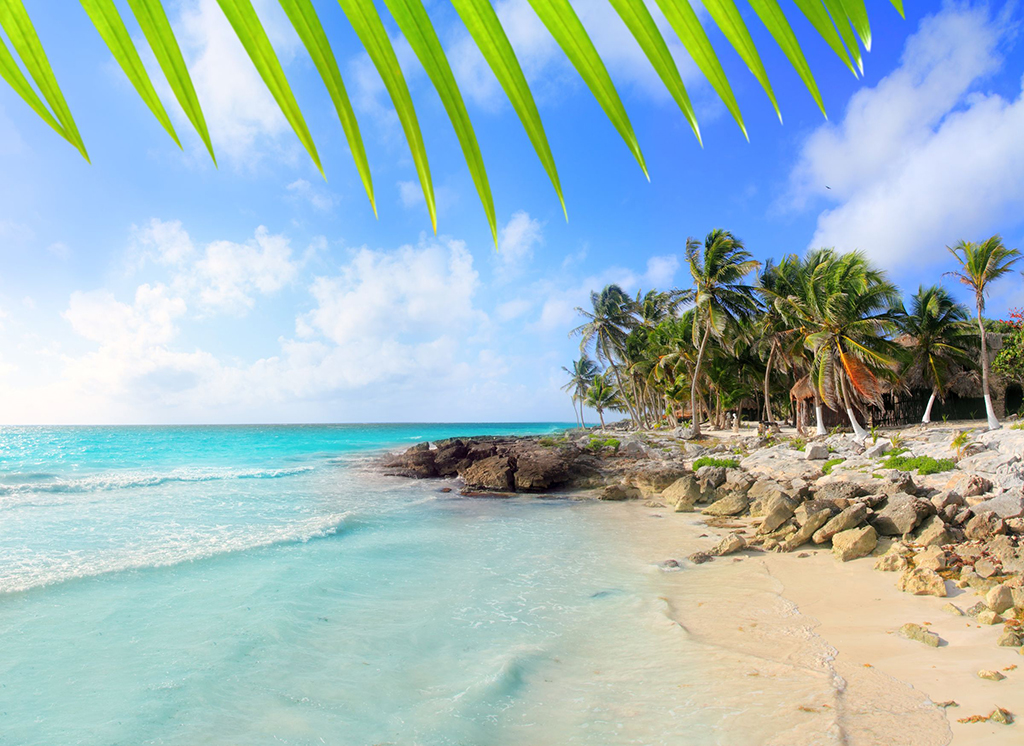
Riviera Maya. Photo © Tono Balanguer/123rf.
The coastline south of Cancún, often referred to as the Riviera Maya, is known for its crystalline waters, white-sand beaches, and interesting local culture with a history that stretches back to the Mayan cultures of pre-Columbian Mexico. Today, many travelers skip the glitzy resorts in Cancún in favor of the more laid-back beach towns to the south.
Best for: Beach lovers, outdoor enthusiasts, scuba divers and snorkelers, and families.
Underwater sights: The Belize Barrier Reef rings Cozumel and Isla Mujeres, drawing scuba divers and snorkelers to explore the crystal-clear waters around these islands. It’s one of the top places to dive in Mexico.
Best place to party: Skip the spring-break dance palaces in Cancún and head to Playa del Carmen for stylish nightlife and music, as well as some excellent restaurants.
Best place to sit still: The small beachfront town of Akumal, between Playa del Carmen and Tulum, retains a low-key, locals-only feeling.
Wild time: The Biosphere Sian Ka’an, an emerald expanse of bays, estuaries, and mangrove forests on the shores of the Caribbean Sea, is home to an astounding diversity of wildlife, including howler monkeys, toucans, iguanas, crocodiles, and more.
Not ruined: Busloads of tourists come to Chichen Itzá from Cancún every day, and with good reason. The ruin of this Mayan city is among the most splendid in Mesoamerica. But you’ll find fewer crowds at Cobá, a stunning Mayan city east of Tulum, where visitors can rent bikes to explore the ruins.
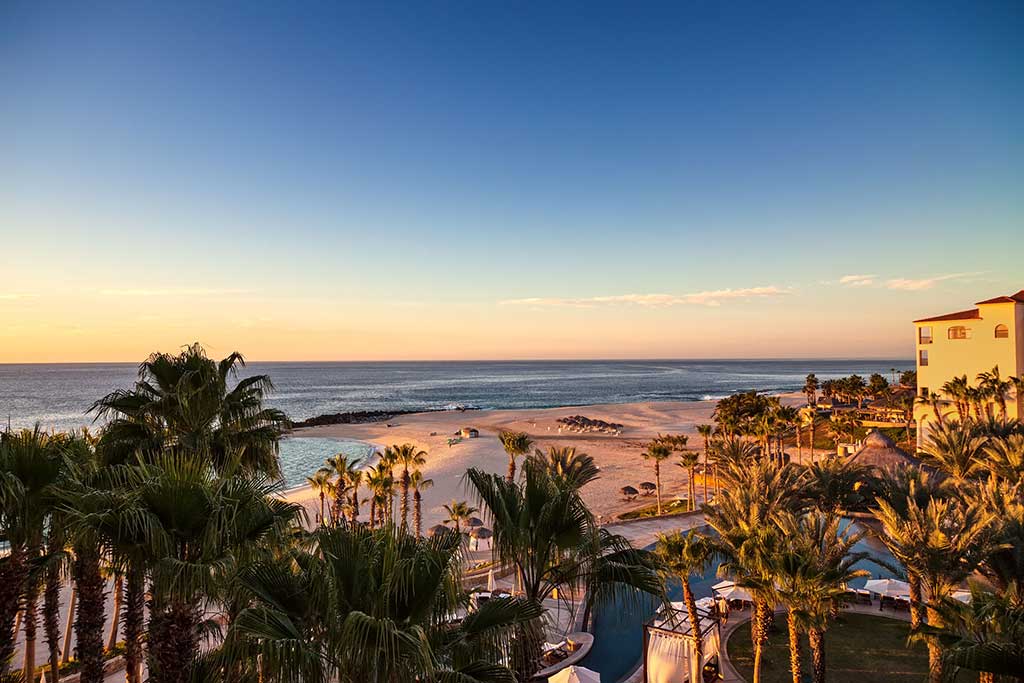
Sea of Cortez in Los Cabos. Photo © Ruth Peterkin/123rf.
Cabo San Lucas, on the tip of the Baja California peninsula, is perched right between the wild Pacific and the tranquil Sea of Cortes. It’s a stunning, upscale resort town, with some of the most dramatic beaches and poshest hotels in the country. San José del Cabo, Cabo San Lucas’s quieter, more inexpensive sister city is just a 30-minute drive down the cape, and a great pick for travelers seeking a touch of traditional Mexican charm.
Suitable for: Newlyweds, couples, families, adventure-sport enthusiasts, and fisherman.
Best cheap snack: Fresh fish tacos, stuffed with deep-friend halibut and topped with shredded cabbage, lime juice, and salsa.
Take the kids: On a glass-bottomed boat ride to the famous arch off the point in Los Cabos, then spend a few hours lounging in the sun on the Playa del Amor.
Or rent a boat to see: Blue, sperm, humpback, minke, and gray whales, among others, that come to breed in the Sea of Cortes throughout the winter months (November to December).
If you miss whale-watching season: Take a kayaking tour of the island of Espiritu Santo, off the coast of La Paz, where the surrounding reefs are filled with a remarkably diversity of fish, birds, and marine mammals.
Skip the beach to visit: Flora Farm, an organic farm and restaurant, and a charming oasis in the desert.
In addition to the destinations listed above, travelers are increasingly making their way to the colonial-era city of Mérida in the state of Yucatan, the wine-and-dining-centric port town of Ensenada in Baja California Norte, and magical alpine pueblo San Cristobal de las Casas in the southern state of Chiapas. Other less-visited (but nonetheless spectacular) locations, like Patzcuaro, Puebla, the Copper Canyon, Real de Catorce, or Zacatecas also make the list.
One thing is certain: The more you travel in Mexico, the more addictive it becomes. I’m currently dreaming about a food tour in the city of Oaxaca and a first-time trip to the port of Veracruz. How about you?